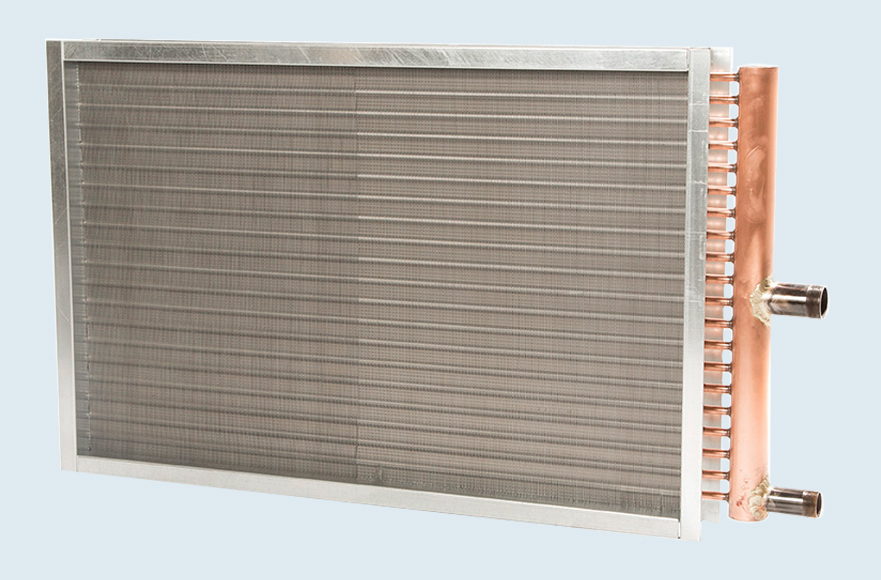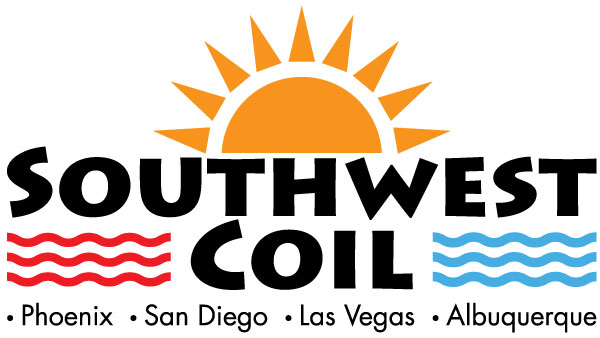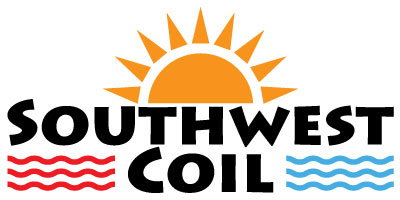The “Big Three” Causes of Coil Failure

After decades in the coil replacement business, Southwest Coil knows that most coils are replaced well before they reach old age. In fact, about 75% of them need replacement well before their time. There are 3 major reasons – 1) adverse temperature, 2) adverse pressure, and 3) corrosion. Also, the original design could have been marginal for the application, systematic conditions may have occurred that weren’t taken into consideration at the time of design, or it can be just a lack of servicing over the lifetime of the coil. The following is a better look at all three:
Adverse Temperature
Coils are normally designed to withstand the operating temperature of the system in which they need to perform. However, the designs may be marginal in the long run. The HVAC industry’s copper temperature limit is 250 degrees F. Many coils have been installed with high-temperature and high-pressure water that are very close to this number; therefore, the longevity in this environment will be less since you are near its maximum temperature. Often, there are steam coils that are 25 PSIG pressure and above, and the coils are in systems where the air is turned off, but the steam is still circulating.
A great number of coils have marginal brazing materials that will not hold up in systems with either adverse temperature or even temperatures that are close to the maximum operating temperature. Remember that coil tubes, manifolds and return bends move (expand and contract) because of the temperature difference inside and outside of the coil. This movement, along with the marginal brazing material, can cause leaks at or near the joints in a coil.
Adverse Pressure
Adverse pressure is the second reason why coils fail. Remember that the freezing of a coil is an adverse pressure event. In a freeze event, the fluid (water or condensate) builds in pressure as the fluid turns to a solid. It’s this pressure build up that distorts a tube or bend and finally causes a split type leak. This is a systematic condition that could have been prevented with the proper coil and accessory design and controls that would have shut down the system if the coil was headed for a freeze event.
Adverse pressure can also be a problem when using copper in high pressure water applications. There are many systems in tall buildings where the water pressure is extremely high at the bottom of the building because the pump is trying to push the water up to the systems at the top of the building. The lower coils need to be constructed of much heavier copper tubes, or even a different material, to deal with the higher pressures in the lower level systems. We have seen the higher-level coils last for 25 years, and the lower level coils need replacement in as little as 7 to 10 years. Quite a difference!
Corrosion
If the first 2 conditions don’t eventually destroy your coil, then corrosive agents created by the 3rd one will – lack of consistent maintenance. There are so many types of coil corrosion they are too numerous to mention in this article. Here are a few of the major ones.
Various types of corrosion on the outside of the coil can create problems with the quality of fluid inside the coil. Salt corrosion occurs in a lot of condenser coils, because they all sit outside – many in a marine type of environment. This can also happen to HVAC systems that draw in large percentages of salt laden air. It’s called electrolysis and is nothing more than a passive and active metal together (copper and aluminum) that react to the moist salt being present. You will see a white chalky substance start around the tubes – that’s the aluminum being eaten away where it touches the copper.
You can usually tell most types of corrosion on the outside, because the holes look irregular and can be very ratty looking in nature. One that is very hard to see at a jobsite is formicary corrosion, because the tubes weep from microscopic holes that resemble an ant’s nest. This is caused by certain chemicals on the surface of the finned-tubes that react with the dehumidified water. These substances have been found inside building materials and in air streams. As an example – women’s hair spray was the cause of corrosion in a Ladies Restroom.
Water and steam inside tubes can be very corrosive due to the treatment process. Many chemicals are used in this process and after contact treatment, these chemical levels can grow and cause serious damage to copper. Many times, these holes are located on the bottom half of the tube circumference. Ammonia, Carbon Dioxide and Oxygen are the three most prevalent in steam boiler systems over long periods of time. Any corrosive agent in fluid will never be found unless the testing agency looks for it specifically. This confirms why PH reports show positive results and yet the coils start to leak.
Southwest Coil manufactures all types of coils. and our creed is “Don’t replace a problem with another problem”. We have thousands of inquiries per year and discussions on premature failure and what coil design or construction will help with future longevity. We have built about every coil design in our industry and constantly strive to impart the best information and products available. Take advantage of our decades of experience and knowledge.


